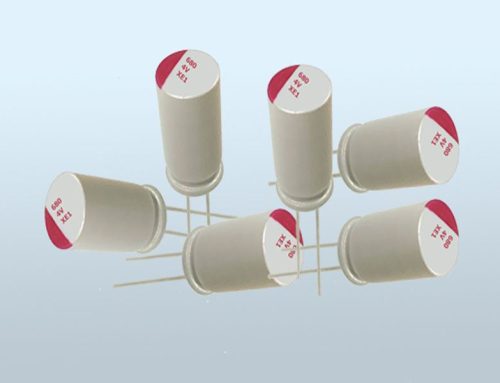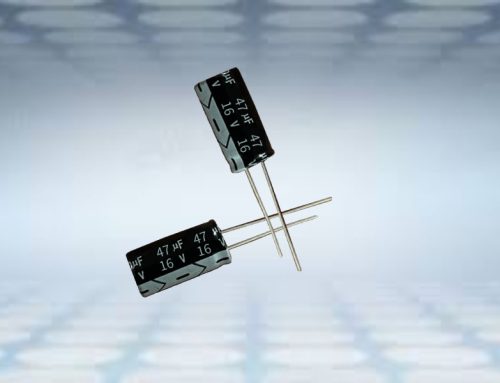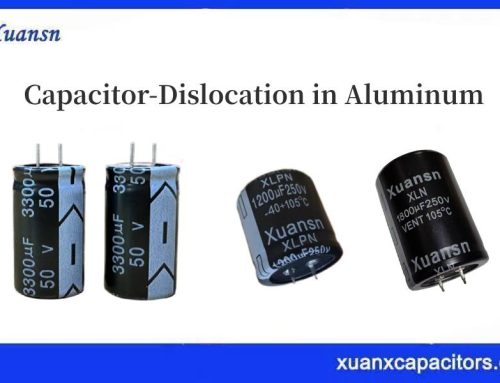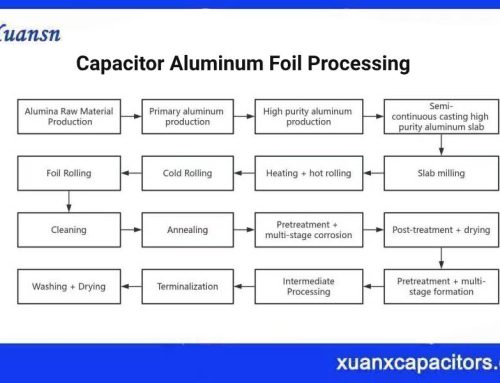1 AC filter and parallel capacitor operation
1.1 Manual switching of filters
AC filters and parallel capacitors are the main capacitive reactive compensation equipment in the converter station. During the rated normal operation of the DC system, there are usually 1 to 2 groups of them in hot standby state, which are used to replace other filters when they fail. When the capacitor operation, the principle of “first switch on, then switch off” should be followed when manually replacing and removing the AC filter. The corresponding AC filter should be removed after the on-site inspection that the AC filter that was first put into operation is operating normally and the DC system is operating stably. In the manual reactive power control mode, after the running AC filter group is shut down and put into operation again, it must wait for at least 10 minutes (this is achieved by the system software in the reactive power automatic mode to control the time of the withdrawal).
In the following cases, the operator can manually switch the AC filter (parallel capacitor):
(1) When the running AC filter is under maintenance or fault elimination, the group of AC filters can be manually removed according to the dispatch permission command to ensure the safe and reliable operation of the capacitor.
(2) If the AC bus voltage exceeds or falls below the range specified by the voltage curve, a group of AC filters can be put into operation or removed according to the dispatching command under the condition of meeting the minimum AC filter group.
1.2 Precautions for the operation of AC filter parallel capacitors
During the operation of the DC system, the operation of the filter is a typical basic skill for the operator, but incorrect operation of the filter and parallel capacitor may lead to faults such as system power reduction and AC bus voltage over-limit. Therefore, it is very important to master the basic operation precautions and handling principles.
(1) When manually switching the AC filter, it is necessary to consider whether the absolute minimum filter group number (Absmin filter), AC bus voltage limit (Umax/Umin), and reactive power limit (Qmax) meet the requirements after switching. If not, the dispatcher can apply for appropriate adjustments in advance to ensure the normal operation of the capacitor.
(2) Before switching the AC filter, changing the DC system mode, or increasing the power, the type and quantity requirements of the AC filter in the current DC system mode should be determined. When the number of AC filter groups in operation cannot meet the normal standby, the superior dispatcher and the converter station leader should be reported immediately.
(3) When the DC system is operating normally, the reactive power control mode should be set to “ON” (open mode), and it is strictly forbidden to set the reactive power control mode to “OFF” (closed mode).
(4) When the AC filter is put into operation or removed from operation, the corresponding records should be carefully made and on-site inspections should be carried out to confirm that the AC filter group is put into operation or removed normally.
(5) After the AC filter trips due to an accident, its isolation switch should be opened immediately, and the on-site control handle of the isolation switch should be turned to the “local” position.
(6) For filters and parallel capacitors that are not in good operating condition (mainly referring to equipment with a high failure rate, or filter equipment that is easy to increase the unbalanced current when switching operations occur), the unbalanced current on the protection screen should be checked after being put into operation or removed, so as to timely understand the good or bad operating conditions of the group of equipment.
(7) Check the availability of the AC filter under the following conditions:
1) The isolating switch is in the closed position and the grounding switch is in the open position;
2) The lockout relay of the corresponding circuit breaker is not activated;
3) The AC filter is connected to the large filter bus and the voltage of the large filter bus is normal, ensuring that the capacitor operation meets the requirements.
(8) Manual switching of the AC filter is not allowed during DC power increase or decrease and system operation mode conversion.
(9) When the large AC filter protection trips or other protection actions cause the large AC filter to lose pressure, all small AC filter circuit breakers and isolating switches should be immediately opened, and the DC system should be monitored more closely to find out the cause as soon as possible and restore the operation of the large AC filter.
(10) The filter carried by the bus can only be switched after the AC filter bus is charged and running. It is not allowed to switch the filter group with the large AC filter circuit breaker.
(11) When the AC filter bus is out of operation, all small filters carried by the filter bus should be shut down first, and then the large AC filter circuit breaker should be opened.
(12) When the unipolar/bipolar DC system starts normally, the absolute minimum filter operation mode of the AC filter group must be met.
1.3 Typical AC filter (parallel capacitor) operation
The operation modes of the AC filter are as follows: the control system automatically switches the AC filter group; in manual mode, the AC filter group is switched on and off at the background workstation; the AC filter is switched on and off on the local control host. The following introduces some typical capacitor operation operations of the filter:
1.3.1 AC filter bus charging operation (taking 3/2 wiring as an example)
(1) Close the bus side circuit breaker to charge the bus.
(2) Close the middle circuit breaker to close the loop (the operation sequence is reversed when the AC filter bus exits operation).
1.3.2 AC filter hot standby recovery (after maintenance) operation
(1) Retrieve the relevant work tickets and remove all temporary safety measures (pay special attention to the removal of the grounding wire)
(2) Check that the filter is intact according to the normal inspection items.
(3) Check that the phase selection and closing device on the group filter protection screen is in operation and operating normally (the AC filter switches of the DC system newly put into operation in my country after 2005 are basically equipped with phase selection and closing devices. Those without such devices can skip this item).
(4) Check that the control and protection system of the corresponding filter is operating normally.
(5) Check that the standby circuit breaker of the filter is normal.
(6) Switch the reactive power control mode to manual control mode.
(7) Pull open the grounding knife switch of the group AC filter.
(8) Close the isolation switch of the group AC filter.
(9) Restore the reactive power control mode to automatic control mode.
1.3.3 AC filter conversion maintenance operation
(1) Switch the reactive power control mode to manual control mode.
(2) Pull open the corresponding circuit breaker.
(3) Pull open the corresponding isolation switch.
(4) Disconnect the operating power supply of the isolation switch.
(5) Close the grounding knife switch. After ensuring safety, continue the subsequent steps of capacitor operation.
(6) Restore the reactive power control mode to automatic control mode.
(7) Disable the first and second sets of protection for the group AC filter.
(8) Disable the corresponding group AC filter switch failure protection on the large group AC filter protection panel.
1.3.4 Large group AC filter group busbar transfer maintenance operation
(1) Verify that all group filters on the large group AC filter meet the reactive power control requirements after exiting.
(2) Pull out all group filter circuit breakers hanging under the large group AC filter.
(3) Pull out the isolation switches of all group filters and disconnect the operating power of the group filter isolation switches.
(4) Pull out the large group AC filter circuit breaker.
(5) Pull out the isolation switch on the filter bus side of the large group AC filter circuit breaker and put it in the “local” position.
(6) Close the large group AC filter busbar grounding knife switch.
(7) Disconnect the secondary small switch of the large group busbar TV (voltage transformer) and disable the relevant protection.
1.3.5 AC filter group busbar (after maintenance) resume operation operation
(1) Retrieve relevant work tickets and remove all safety measures.
(2) Close the secondary small switch of the AC filter group bus TV.
(3) Put the relevant large group AC filter and small group filter protection into operation.
(4) Close the large group AC filter circuit breaker to charge the large group filter bus.
1.3.6 AC filter switching operation when the DC system is running
(1) Check the type and quantity of spare AC filters to ensure that they meet the system operation requirements and the safety requirements of capacitor operation.
(2) Check that the AC system bus voltage is normal.
(3) Switch the reactive power control mode to manual control mode.
(4) Close the circuit breaker of the AC filter to be put into operation and check that the system is operating normally.
(5) Pull open the circuit breaker of the corresponding filter to be withdrawn.
(6) Restore the reactive power control mode to automatic control mode.
1.4 Typical abnormality handling
(1) When the capacitor unbalance protection alarm of the AC filter or parallel capacitor is sounded, if the system conditions permit, the faulty AC filter (parallel capacitor) can be withdrawn from operation for processing. If it is not withdrawn from operation, it should be monitored more closely. If the alarm signal disappears by itself, it should be reported to the dispatcher in time.
(2) After the AC filter capacitor unbalance protection stage II trips, the dispatcher should be informed immediately. If there is no spare AC filter in operation, the dispatcher should be requested to reduce the DC transmission power to ensure the safe operation of the DC system.
(3) When the AC filter sends an overcurrent protection or zero-sequence current protection alarm signal, the faulty AC filter should be taken out of operation for processing according to the requirements of the converter station; when the AC filter sends a resistor overload protection, L1 reactance overload protection, L2 reactance overload protection stage I alarm signal, the faulty AC filter should be taken out of operation as soon as possible for processing. If there is no spare AC filter in operation, measures should be taken to reduce the DC transmission power to ensure the safe completion of the capacitor operation.
(4) In some cases, if there is a single set of protection abnormalities in the filter and parallel capacitor, and it is confirmed that some boards or components of the protection device are abnormal in collection, calculation, etc., in order to prevent the filter from tripping due to hardware failure of the protection device, the dispatcher can be requested to withdraw a set of protection devices and process them as soon as possible.
2 DC filter operation
In most domestic DC transmission systems, DC filters are usually configured with two groups per pole (back-to-back converter stations are special and are not configured with DC filters), one group is used to filter out characteristic harmonics on the DC side, and the other group is used to filter out non-characteristic harmonics on the DC side. The filter used to filter out characteristic harmonics is generally a double-tuned 12/24 DC filter, and the filter used to filter out non-characteristic harmonics has different configurations depending on the project. This section specifically takes a 6/42 double-tuned non-characteristic harmonic filter as an example to illustrate the relevant regulations and precautions for DC filter operation.
2.1 Precautions for DC filter operation
(1) DC filters can be switched on and off with power on (according to the regulations of different projects, the high-voltage side disconnector can disconnect a load of a certain current size).
(2) When disconnecting a DC filter with power on, the high-voltage side disconnector should be pulled first, and then the low-voltage side disconnector; the operation sequence is reversed when switching on.
(3) During the operation of the DC filter from the “connected” state to the “grounded” state, after the high-voltage side disconnector is opened, the corresponding grounding knife switch can be closed after a certain delay.
(4) At least one set of DC filters must be put into operation at each of the two converter stations at the same pole, otherwise the pole cannot be started.
(5) After the DC filter trips due to an accident, it should be checked on site that the disconnectors on both sides have been opened.
(6) The operating personnel must be familiar with the requirements for the operation form and mode of the DC filters at the local and opposite converter stations of the same pole. For example: The rectifier station and inverter station of the same pole of the Yindong DC project can be operated if each pole lacks a set of DC filters, but at least one station must have a DC filter in operation, and at least one type of DC filter must be in operation at both ends. If each station lacks two sets of DC filters per pole, the pole cannot be operated.
(7) The DC filter can be switched on and off with power on to ensure safety during operation and stability of capacitor operation.
2.2 Typical operation of DC filter
2.2.1 DC filter exit operation (taking DC filter 6/42 of pole 1 of bipolar DC system as an example)
(1) Check that the sequence control mode is in automatic mode.
(2) Check that the four groups of DC filters in the rectifier station and inverter station pole 1 are all put into operation.
(3) Click the “DC filter operation” icon in the pop-up window.
(4) Click “Pole 1 first group of DC filter 6/42 grounding” in the pop-up window and operate the capacitor.
(5) Click the “Execute” button in the pop-up window.
(6) Check that the corresponding disconnector is automatically opened normally and the corresponding grounding knife is automatically closed normally.
2.2.2 DC filter operation (taking pole 1 DC filter 6/42 as an example)
(1) Check that the sequence control mode is in automatic mode.
(2) Click the “DC filter operation” icon in the pop-up window.
(3) Click “Pole 1 first group of DC filter 6/42 connection” in the pop-up window.
(4) Click the “Execute” button in the pop-up window.
(5) Check that the corresponding grounding knife is automatically opened normally and the corresponding disconnector is automatically closed normally.
2.3 Typical abnormality handling of DC filters
(1) When a group of DC filters in the operating pole is shut down for maintenance, it is strictly forbidden to perform injection current tests on the current transformers related to the DC pole protection in the group of DC filters.
(2) When the DC filter capacitor unbalance protection alarm sounds, if the system conditions permit, the faulty DC filter can be taken out of operation for processing. If it is not taken out of operation, it should be monitored more closely. If the alarm signal disappears by itself, it should be reported to the corresponding dispatching department in a timely manner.
(3) When the DC filter capacitor unbalance protection stage I sends an alarm signal, if there is a spare DC filter, the faulty DC filter should be taken out of operation for processing within 2 hours to ensure the safety of capacitor operation and system stability.




